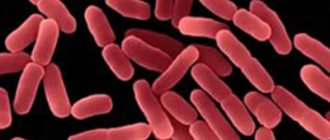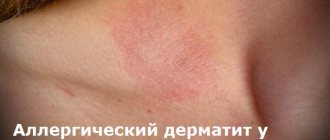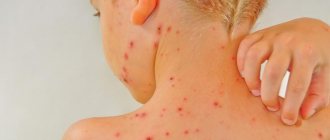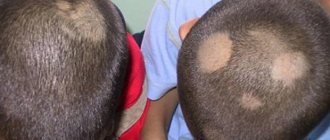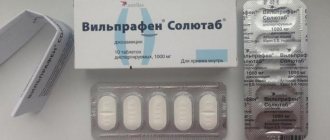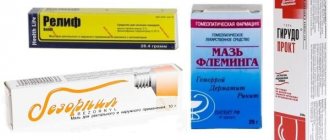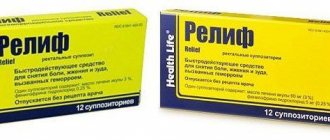The term “atopy” refers to a genetically determined predisposition to a number of allergic diseases and their combinations that occur in response to contact with certain environmental allergens. Similar diseases include chronic atopic dermatitis, also called atopic eczema/dermatitis syndrome and atopic eczema.
Atopic dermatitis is a skin chronic atopic inflammatory disease that develops mainly from early childhood and occurs with exacerbations in response to low doses of specific and nonspecific irritants and allergens, characterized by age-related features of the localization and nature of the lesions, accompanied by severe itching of the skin and leading the sick person to emotional and physical maladjustment.
Causes of atopic dermatitis in children and risk factors for its development
Genetic predisposition to the development of atopic dermatitis in children has been confirmed in more than 80% of cases (according to other sources - more than 90%). If both parents have signs of atopy, the risk of having a child with the corresponding disease increases almost 5 times and amounts to 60–80%, but if one of the parents is a carrier of the disease, the risk of hereditary transmission of atopic dermatitis ranges from 30 to 50%.
In most cases, atopic dermatitis is caused by a hereditary predisposition
Recent research in the field of allergology and dermatology has identified 3 main genetically determined factors that predetermine the development of atopic dermatitis in children:
- predisposition to allergic reactions;
- disruption of the functioning of the epidermal barrier;
- a chain of pathological reactions of the immune system that provoke allergic changes in the skin.
The congenital tendency to atopic dermatitis in children is explained by the following reasons:
- damage to the genetic control of cytokine formation (mostly IL-4, IL-17);
- increased synthesis of immunoglobulin E;
- originality of response to exposure to allergens;
- hypersensitivity reactions to exposure to allergens.
Currently, more than 20 genes are known (SELP, GRMP, SPINK5, LEKTI, PLA2G7 and others, loci 1q23-q25, 13q14.1, 11q12-q13, 6p21.2-p12, 5q33.2, 5q32), conditionally divided into 4 main classes, with mutations in which there is a high probability of developing atopic dermatitis in children:
- Genes whose presence increases the risk of developing the disease due to an increase in total immunoglobulin E.
- Genes responsible for IgE response.
- Genes that cause an increased reaction of the skin to irritants not associated with atopy.
- Genes involved in inflammation with the participation of interleukins, without connection with immunoglobulin E.
In addition to the peculiarities of the immune response, local mechanisms of the formation of atopic dermatitis in children are also hereditarily predetermined:
- massive accumulation in the skin of Langerhans cells (intraepidermal macrophages) and eosinophils that are resistant to apoptosis for a long time;
- a greater number of receptors for immunoglobulin E on the membranes of these cells compared to healthy children;
- insufficient production of ceramides, which are an essential component of cell walls;
- excessive sensory innervation of the skin;
- violation of the permeability of the skin barrier.
The main factor determining the inferior functioning of the skin barrier in children with atopic dermatitis are mutations in the gene encoding the flaggrin protein (FLG), the main hydrophilic protein of the epidermal layer. This protein is concentrated in skin cells and performs a protective barrier function, preventing the penetration of aggressive substances from the outside through the epidermis. In the presence of defective genes responsible for encoding flaggrin, the mechanical protective function of the skin suffers, which causes the passage of various allergens through them, with the concomitant development of allergic inflammation of the skin.
The most serious complication of atopic dermatitis is infection of scratches and weeping (the addition of a bacterial, viral or fungal infection).
In addition to reducing the effectiveness of physical protection, defects in the flaggrin gene lead to increased transcutaneous loss of endogenous water and damage to epidermal cells responsible for the synthesis of keratin, which causes changes in the condition of the skin in children with atopic dermatitis.
Recent studies have also confirmed a genetically determined defect in the synthesis of antimicrobial peptides in the structures of the skin, necessary for complete antiviral, antifungal and antibacterial protection.
Despite the presence of defective genes, mutations of which can lead to the development of the disease, atopic dermatitis in children does not develop in 100% of cases. To realize a genetic predisposition to atopic dermatitis, exposure to certain external and internal environmental factors is necessary, the main of which are:
- unfavorable pregnancy, childbirth, postpartum period;
- incorrect eating behavior of the mother during pregnancy and breastfeeding: consumption of foods rich in antigens, which include, for example, citrus fruits, strawberries, chocolate, red fish, ethanol-containing drinks, egg whites, nuts, etc. (provokes the manifestation atopic dermatitis in more than half of the cases);
- late breastfeeding or refusal to breastfeed from the first days;
- use of unadapted formulas for artificial feeding;
- introduction of prohibited (or not recommended for his age) food products into the child’s diet;
- diseases of the gastrointestinal tract;
- dysbiosis of the intestinal flora (deficiency of lacto- and bifidobacteria, along with excessive growth of populations of Staphylococcus aureus, E. coli, fungi of the genus Candida, etc.), creating a condition for the penetration of food allergens through the intestinal epithelium (determined in approximately 9 out of 10 children with atopic dermatitis) ;
- autonomic dysfunction;
- high antigenic load;
- unfavorable environmental conditions;
- the presence of foci of chronic infection in the child (promotes the development of bacterial sensitization).
The food allergens that most often provoke the launch of pathological immunochemical reactions and act as a trigger factor for the development of atopic dermatitis in children are most often the following:
- cow's milk proteins (86%);
- chicken egg (82%);
- fish (63%);
- cereals (45%);
- vegetables and fruits of orange and red color (43%);
- peanuts (38%);
- soy proteins (26%).
Poor maternal nutrition during breastfeeding is a predisposing factor to atopic dermatitis
The significance of food allergies as a cause of atopic dermatitis in children decreases significantly with age, but in parallel the significance of inhaled allergens increases: household (38%), epidermal (35%) and pollen (32%).
Causes of atopic dermatitis
Atopic dermatitis develops in 80% of children whose mother and father suffer from this disease; if only one of the parents - 56%; if one of the parents has the disease, and the other has a respiratory pathology of allergic etiology - almost 60%.
Some authors are inclined to believe that allergic predisposition is a consequence of a complex of various genetic disorders. For example, the importance of congenital deficiency of the enzymatic system of the digestive tract has been proven, which leads to inadequate breakdown of incoming products. Impaired intestinal and gallbladder motility, the development of dysbiosis, scratching and mechanical damage to the epidermis contribute to the formation of autoantigens and autosensitization.
The result of all this is:
- absorption of food components unusual for the body;
- formation of toxic substances and antigens;
- dysfunction of the endocrine and immune systems, receptors of the central and peripheral nervous system;
- the production of autoantibodies with the development of the process of autoaggression and damage to the body’s own tissue cells, that is, immunoglobulins are formed, which play a major role in the development of an immediate or delayed atopic allergic reaction.
With age, the importance of food allergens is increasingly minimized. Skin lesions, becoming an independent chronic process, gradually acquire relative independence from food antigens, response mechanisms change, and exacerbation of atopic dermatitis occurs under the influence of:
- household allergens - house dust, fragrances, sanitary household products;
- chemical allergens - soaps, perfumes, cosmetics;
- physical skin irritants - coarse wool or synthetic fabric;
- viral, fungal and bacterial allergens, etc.
Another theory is based on the assumption of such congenital features of the skin structure as insufficient content of the structural protein filaggrin, which interacts with keratins and other proteins, as well as a decrease in lipid synthesis. For this reason, the formation of the epidermal barrier is disrupted, which leads to easy penetration of allergens and infectious agents through the epidermal layer. In addition, a genetic predisposition to excessive synthesis of immunoglobulins, which are responsible for immediate allergic reactions, is assumed.
Atopic dermatitis in adults can be a continuation of the disease from childhood , a late manifestation of a latent (latent, without clinical symptoms) disease, or a late manifestation of a genetically determined pathology (in almost 50% of adult patients).
Relapses of the disease occur as a result of the interaction of genetic and provoking factors. The latter include:
- unfavorable ecology and excessive dry air;
- endocrine, metabolic and immune disorders;
- acute infectious diseases and foci of chronic infection in the body;
- complications during pregnancy and the immediate postpartum period, smoking during pregnancy;
- long-term and repeated psychological stress and stressful conditions, shifting nature of work, long-term sleep disorders, etc.
In many patients, self-treatment of allergic dermatitis with folk remedies, most of which are prepared on the basis of medicinal plants, leads to a pronounced exacerbation. This is explained by the fact that they are usually used without taking into account the stage and extent of the process, the patient’s age and allergic predisposition.
The active components of these products, which have antipruritic and anti-inflammatory effects, are not purified from accompanying elements; many of them have allergenic properties or individual intolerance, and contain tanning and drying substances (instead of the necessary moisturizers).
In addition, self-prepared preparations often contain natural, unrefined vegetable oils and/or animal fats that close the skin pores, which leads to an inflammatory reaction, infection and suppuration, etc.
Thus, theories about the genetic cause and immune mechanism for the development of atopic dermatitis are the main ones. The assumption about the presence of other mechanisms of disease implementation has been only a subject of debate for a long time.
Video: How to find the cause of allergic dermatitis
Forms of the disease
Depending on the morphological picture of atopic dermatitis in children, the following forms are distinguished:
- exudative - redness of varying severity and swelling of the skin, multiple itchy rashes (usually symmetrical) in the form of papules, vesicles against the background of weeping, transforming into erosions, becoming covered with crusts during the healing process;
- erythematous-squamous - papular rash, accompanied by severe itching, the formation of multiple scratches against the background of dry skin;
- lichenoid – thickening and intensification of the skin pattern, moderate infiltration, dryness predominate;
- prurigo-like - multiple isolated dense papules, topped with small blisters, against the background of an enhanced skin pattern; changes are more often noted in the projection of natural folds and folds.
According to the severity, atopic dermatitis in children is divided into mild, moderate and severe.
With mild atopic dermatitis, there is local skin damage (not exceeding 5% of the total area), mild itching that does not affect the child’s sleep, mild skin manifestations (minor redness, pastiness, single papules and vesicles), exacerbations no more than twice a year.
The moderate form of the disease is characterized by widespread skin lesions, fairly intense itching, which negatively affects the patient’s quality of life, pronounced inflammatory changes in the skin, enlarged regional lymph nodes, and exacerbations develop 3-4 times a year.
Common areas affected by atopic dermatitis
The severe form is characterized by the involvement of more than 50% of the skin in the inflammatory process, intense, debilitating itching that sharply affects the quality of life, intense redness and swelling of the soft tissues, multiple scratches, cracks, erosions, involvement of all groups of lymph nodes in the pathological process, and a continuously relapsing course.
Periods of the disease:
- spicy;
- subacute;
- remission (complete or incomplete).
According to the prevalence of the process:
- limited atopic dermatitis - less than 5% of the skin area is involved in the inflammatory process;
- widespread – no more than 50% of the skin is affected;
- diffuse – more than 50% of the skin area is involved in the inflammatory process.
Treatment
Currently, neurodermatitis in children is difficult to treat, since the pathology requires long-term and serious monitoring. Treatment of neurodermatitis is always comprehensive with careful selection of effective combinations of skin care products and drug therapy.
The most important condition for successful treatment is identifying and eliminating contact with the allergen. Clinical recommendations include the following conditions:
- Eliminate rashes on your child's skin and prevent itching.
- Replenishing the normal moisture of the skin, restoring its function.
- Treatment of concomitant pathologies.
- Prevention of the progression of atopy and the development of complications.
Treatment of atopic dermatitis in infants is usually based on external therapy:
- Keep your nails short to prevent scratching.
- Use neutral soap for bathing.
- Application of anti-inflammatory and wound-healing agents - ointments and pastes (Panthenol, Zinc ointment, etc.).
- Treating the skin with antiseptic solutions (Chlorhexidine, Furacillin, Miramistin).
- Application of products containing topical hormones (Advantan, hydrocortisone ointment, etc.). Treatment of neurodermatitis in children begins with lighter drugs, switching to stronger ones if there is no effect.
- Antibacterial, antimycotic or antiviral agents in case of secondary infection (Clotrimazole, Nizoral, Acyclovir).
Drug treatment is aimed at eliminating symptoms and combating the cause of the pathology. Children are prescribed drugs of various groups:
- Antihistamines - Zodak, Fenistil, Diazoliin.
- Hormonal drugs - used in the acute stage (Triamcinolone).
- Antibacterial agents for infection - Erythromycin, Flemoxin.
- Plasmapheresis - helps cleanse the blood of allergens.
- Irradiation with an ultraviolet lamp accelerates wound healing.
- Drugs that improve the functioning of the gastrointestinal tract - Linex, Mezim, etc.
- Multivitamin complexes.
Stages
Depending on age, atopic dermatitis in children goes through several stages, which are characterized by a specific morphological picture:
- infant stage - lasts from birth to 2 years and is manifested by acute weeping inflammation of the skin of the face (forehead, cheeks, sometimes neck), scalp, outer surface of the legs and buttocks;
- childhood stage - lasts from 2 to 13 years, the phenomena of lichenification predominate, the typical location of inflammatory changes is skin folds and folds, more than half of the children have involvement of the soft tissues of the face in the inflammatory process (the so-called atopic face), rashes in this period are localized in areas of the flexor surfaces of the limbs, elbow and popliteal fossae;
- teenage-adult stage – there is a sharply increased skin pattern, thickening of the skin, dryness and peeling; typical locations of inflammatory changes are the skin of the face, upper body, extensor surfaces of the extremities.
Where does atopic dermatitis appear?
The most common sites of injury are:
- skin folds of the arms and legs;
- nail plates;
- soles;
- scalp;
- oral cavity (thrush).
Cases of simultaneous manifestation of fungal and viral infections are not excluded!
Atopic dermatitis is a pathology of an allergic nature. Unfortunately, there are no specific measures to prevent the disease, but doctors note that children who have been breastfed longer are exposed to the disease much less frequently. Also, according to the recommendations of nutritionists, it is recommended to completely exclude cow’s milk from the diet of children under one year of age. If symptoms of the disease are detected, you must immediately contact a specialist and begin treatment!
Symptoms of atopic dermatitis in children
The main symptoms of atopic dermatitis in children:
- hyperemia and swelling of the skin;
- polymorphic skin rashes (papules, vesicles), usually symmetrical in nature, isolated or prone to merging;
- strengthening and thickening of the skin pattern;
- wetting of the skin;
- erosion of the inflamed surface;
- excoriation (traces of scratching);
- the appearance of crusts on the surface of the blisters during the healing of skin defects;
- dry skin, peeling, cracking;
- skin itching of varying severity (from minor to painful, disrupting sleep and significantly worsening the patient’s quality of life), depending on the severity of atopic dermatitis;
- It is possible that foci of depigmentation may appear at the site of inflammatory changes after their resolution.
External manifestations of atopic dermatitis in children
The intensity of painful manifestations decreases as the inflammatory process subsides in the subacute period. In case of incomplete remission, minimal manifestations remain in the form of areas of flaking, dryness, and minor traces of scratching. During the period of stable remission, residual effects can be detected in the form of peeling, dryness and foci of hyper- or depigmentation in areas of inflammatory skin changes.
Symptoms
In 1980, J. Hanifin and H. Rajka introduced diagnostic criteria for atopic dermatitis, which are divided into two groups: mandatory symptoms and additional ones.
Mandatory manifestations of the disease:
- a certain appearance of the rashes and their location (in adults, lichenification and scratching are localized on the flexor surfaces, in children - on the face and extensor surfaces, characterized by the presence of crusts, cracks, and symmetry of the process);
- chronic course with episodes of exacerbations (under the influence of provoking factors) and remission, seasonal, onset of the disease no later than adolescence;
- itching;
- history of atopy or family history of atopy.
Additional symptoms include:
- onset of the disease at an early age;
- xerosis (dryness and roughness of the skin);
- ichthyosis, pityriasis pilaris or increased pattern on the palms;
- Denier-Morgan folds (deep wrinkles on the lower eyelids);
- dark circles around the eyes (allergic glow);
- conjunctivitis;
- keratoconus (so-called conical cornea);
- anterior subcapsular cataract;
- itching with increased sweating;
- the first type of skin reactivity (delayed hypersensitivity reaction);
- perifollicular localization of rashes;
- pallor or flushing of the face;
- folds on the front of the neck;
- frequent infectious skin lesions;
- dermatitis on the skin of the hands and feet;
- nipple eczema;
- white dermographism;
- elevated serum IgE levels.
Depending on the age of the patient and the stage of the disease, clinical manifestations may vary: the nature of the skin rashes, their localization and the severity of the process change.
Diagnostics
In most cases, atopic dermatitis in children is diagnosed on the basis of a characteristic clinical picture and hereditary allergic history, since there are no laboratory or instrumental diagnostic methods that clearly confirm or refute the presence of the disease.
In 1980, JM Hanifin and G. Rajka proposed criteria for the diagnosis of atopic dermatitis in children (4 main and more than 20 additional). To reliably confirm the diagnosis, it was necessary to have at least 3 criteria from both groups; in the mid-90s of the last century, the criteria were revised due to their cumbersomeness, but even in their modified form they were not widely used in pediatric practice.
Atopic dermatitis in children is a disease that is extremely common in pediatric practice; it occurs on all continents and in representatives of all races.
In 2007, the UK developed the Atopic Eczema in Children Consensus Document, which proposes that atopic dermatitis in children should be confirmed by pruritus in combination with three or more of the following:
- the presence of dermatitis in the area of the flexor surface of the extremities, involving skin folds (elbow or popliteal folds) or the presence of dermatitis on the cheeks and/or on the extensor surfaces of the extremities in children under 18 months;
- history of dermatitis;
- widespread dry skin over the past year;
- the presence of bronchial asthma or allergic rhinitis (or the presence of atopic diseases in first-degree relatives);
- manifestation of dermatitis up to two years.
The following signs are of great importance in the diagnosis of atopic dermatitis in children: a family history of allergic diseases, signs indicating a connection between exacerbation of dermatitis and non-infectious allergens (food, epidermal, pollen) and the positive effect of eliminating contact with the suspected allergen.
Laboratory research methods used in the diagnosis of atopic dermatitis in children:
- study of the level of total and allergen-specific immunoglobulins E (the data obtained are assessed with caution due to the large number of false-positive and false-negative results in children under 3 years of age);
- determination of class E antibodies to Staphylococcus aureus and its exotoxins, fungi (detection of possible bacterial sensitization);
- open food challenge test;
- performing skin tests (prick test, skin prick tests, patch tests).
Diagnostic methods
The diagnosis of pathology includes a medical examination and clinical tests. At the appointment, the medical specialist learns information about the disease: the time of the first symptoms, the possible cause, the presence of pathology in relatives. The patient or his parents talk about the symptoms of the disease, on the basis of which the doctor makes preliminary conclusions.
A visual examination is carried out; the doctor is interested not only in the affected areas, but also in the entire skin. For the most part, rashes and eczema are located under the knees, on the elbow cavity, between the folds. The specialist assesses the amount of rash, its color and nature.
When diagnosing, the following factors are taken into account:
- Itching. It is a mandatory sign of atopic dermatitis.
- Rash. Depends on the age of the patient and the duration of the disease. In infants, the cheeks and upper half of the body are affected. In adolescents, pigmentation disturbances, isolated papules and thickening of the skin are observed.
- Highly dry skin , which is accompanied by peeling and the formation of scales.
- Course of the disease. With atopic dermatitis, the pathology occurs in waves, with periods of remission and acute phases.
- Hereditary factor. The doctor takes into account the presence of the disease in the members of the seven, and is especially interested in brothers and sisters.
- Presence of another atopic disease. A medical professional will determine whether you have allergic rhinitis or asthma.
The symptoms are typical for most patients, but additional manifestations may occur. The patient often experiences pallor or redness of the face, dark circles on the eyes, and conjunctivitis. There are often allergies to medications, seizures and persistent skin infections.
Clinical tests confirm the suspected diagnosis. A skin test with allergens is performed to identify an inadequate immune response. A general blood and urine test is performed to assess the severity of the disease.
The level of IgE is determined - a blood protein that provokes a pathological reaction of the body to an irritant. Based on the diagnostic results, the disease is distinguished from similar disorders and a treatment regimen is prescribed.
Treatment of atopic dermatitis in children
Treatment of atopic dermatitis in children should include measures in the following areas:
- elimination of provocateurs (both allergenic and non-allergenic) that cause exacerbation of the disease;
- local external therapy;
- systemic therapy, which is used in case of ineffectiveness of elimination measures and the use of external agents or when infectious complications occur (infection of the inflamed surface).
In children under 12 months of age, the manifestation of atopic dermatitis in the vast majority of cases is provoked by food allergens entering the body; in older children, such a connection is not clearly visible.
Elimination measures must be carried out against not only food, but also household and pollen allergens. Eliminating contact of a child with atopic dermatitis with pets, wool, fur or down products can significantly reduce the clinical manifestations of the disease and reduce its severity. Creating a hypoallergenic environment and diet are necessary conditions for the successful treatment of atopic dermatitis in children.
Agents used for local treatment of atopic dermatitis in children:
- hormonal (glucocorticosteroid) drugs that have a minimal range of contraindications and the absence of systemic effects along with a powerful anti-inflammatory effect (methylprednisolone aceponate, alklometasone dipropionate, mometasone furoate);
- calcineurin inhibitors;
- non-steroidal anti-inflammatory drugs;
- when the inflamed surface is infected, combination preparations are used that contain, in addition to local glucocorticosteroids, antibacterial and antifungal components;
- corneotherapy [restoring the integrity of the skin with the help of nourishing and moisturizing agents (emollients), aimed at saturating the epidermis with water and nourishing it];
- antihistamines.
Systemic treatment of atopic dermatitis in children:
- antihistamines;
- mast cell membrane stabilizers;
- glucocorticosteroids;
- antibacterial drugs (if a bacterial infection is attached);
- correction of concomitant pathology (treatment of diseases of the gastrointestinal tract, administration of metabolic drugs and antioxidant therapy, normalization of the functional state of the nervous system, sanitation of foci of chronic infection);
- pre- and probiotics;
- enterosorbents;
- immunomodulators;
- immunosuppressants.
Genetic predisposition to the development of atopic dermatitis in children has been confirmed in more than 80% of cases (according to other sources - more than 90%).
In addition to drug therapy, physiotherapeutic methods of exposure are indicated in the complex treatment of atopic dermatitis in children: UV-A and UV-B irradiation, acupuncture, hyperbaric oxygenation, magnetic therapy, laser therapy. Significant positive results in reducing the severity of painful manifestations are demonstrated by sanatorium-resort treatment in a dry marine climate.
Goals of treatment for atopic dermatitis in children
Nutrition for atopic dermatitis
A hypoallergenic diet is the key to successful and quick treatment. During an exacerbation, patients exclude foods that have significant allergenic activity. These include strawberries, nuts, chicken eggs, honey. Red fish, sausage and chocolate are prohibited.
The menu includes light-colored berries and fruits, cereals, lean meat (beef, rabbit and turkey). Vegetable and melted butter are allowed. Fructose is used instead of sugar.
All dishes are steamed, stewed and baked. When using potatoes, the vegetable is soaked in water for 8 hours to remove excess starch. Soups can be cooked in a second broth using lean meat. The diet is followed for up to 2 months, then the diet is gradually expanded.
Parents are responsible for ensuring that there are no allergies to new foods. If an immune reaction to a specific ingredient occurs, it will need to be removed from the diet.
Possible complications and consequences
The most serious complication of atopic dermatitis is infection of scratches and weeping (attachment of a bacterial, viral or fungal infection): impetigo, folliculitis, furunculosis, streptostaphylococcal impetigo, angular stomatitis, erysipelas, exudative erythema, pyoderma, herpetiform infection, ulcerative necrotic and other lesions, localized in various areas of the skin, most often on the face, limbs, and torso.
The outcome of infection of the wound surface can be sepsis and, in extremely severe cases, death.
In addition to physical suffering, atopic dermatitis often provokes changes in the psychological state of the child. Persistent, painful itching and discomfort from skin rashes provoke astheno-neurotic reactions (insomnia at night, drowsiness during daylight hours, irritability, tearfulness, decreased activity, anxiety, refusal to eat, etc.), cosmetic defects complicate social interactions with peers.
Treatment of atypical dermatitis with folk remedies
Treatment of infantile eczema is a long and expensive process. The body of many patients is not able to tolerate the constant use of pills. Treatment of atypical dermatitis with folk remedies comes to the rescue. For example, celandine juice, diluted with boiled water in a ratio of 1:2, is used in the form of applications, which are placed on the area for 15 minutes. Other natural remedies have also proven effective:
- hop;
- tar;
- periwinkle;
- Sophora japonica;
- series;
- wine;
- herbal infusions;
- tar soap;
- potato;
- geranium or tea tree oil.
Forecast
The most active course of atopic dermatitis in children is observed at a young age. As you get older, the symptoms of the disease usually fade away, become less pronounced, and the frequency of exacerbations decreases significantly. In most cases, atopic dermatitis in children resolves spontaneously at 3–5 years of age, less often in adolescence.
If the manifestations of atopy persist into adulthood, the symptoms are observed for 30-40 years, gradually regress, also spontaneously resolving in the future.
The prognosis is most favorable with complex treatment, following dietary recommendations and creating a hypoallergenic environment.
Prevention and prognosis
To reduce the likelihood of developing such a disease, parents of babies need to:
- take proper care of your baby's skin;
- regularly perform hygiene measures;
- moisturize the skin in a timely manner;
- provide proper and nutritious nutrition;
- avoid overheating or hypothermia of the body;
- avoid contact with the allergen;
- early detection and full treatment of pathologies of a viral and infectious nature;
- buy clothes made from natural fabrics;
- use diapers appropriate for the child’s age category;
- Take your baby to the pediatrician regularly.
Often, dermatitis in children has a favorable prognosis - this is only possible if you seek qualified help early. However, if symptoms are ignored or in cases of non-compliance with the recommendations of the attending physician, there is a high probability of complications developing. The main consequences include the addition of a secondary infectious, fungal or viral process. In such cases, it will be much more difficult to get rid of the disease, and it is also possible that it will become chronic and marks will appear on the affected areas of the skin after recovery.
Prevention
- Elimination of food provocateurs.
- Ensuring adequate ventilation of home spaces.
- Maintaining optimal humidity, temperature and air purity.
- Refusal to use furniture and interior items that can serve as dust collectors (carpets, books, flowers, heavy curtains, upholstered furniture, soft toys).
- Prohibition on the use of feather and down pillows and blankets.
- Refusal to keep pets, birds and aquariums.
- Refusal to wear clothes made of fur and wool.
- Follow-up with an allergist.
- Long-term sanatorium-resort treatment in the summer.
- Carrying out general strengthening procedures (hardening, UV irradiation, massage).
One of the main preventive measures that can significantly reduce the severity of symptoms of the disease is following a hypoallergenic diet for atopic dermatitis in children:
- reduction in the diet or complete rejection of foods that stimulate the production of histamine, a provocateur of allergic inflammation (citrus fruits, fish, cow's milk, overly sweet foods, spices, nuts, red fruits and vegetables, etc.);
- small, frequent meals;
- introduction of fermented milk products, fresh herbs, green fruits and vegetables, gluten-free cereals, beef, rabbit meat, turkey into the diet;
- sufficient water intake;
- avoidance of sweet, carbonated drinks or drinks containing dyes and preservatives.
Video from YouTube on the topic of the article:
Etiology
Biological, physical or chemical factors, as well as their combination, can influence the formation of the disease. In the vast majority of cases, manifestation is observed in the first year of life - children of preschool and school age categories are exposed to this disorder quite rarely.
Atopic dermatitis in children is one of the most common types of the disease, which develops against the background of:
- genetic predisposition;
- bronchial asthma;
- allergies to food, wool, dust or pollen;
- artificial feeding;
- uncontrolled use of drugs;
- various infectious viral diseases;
- diseases of the digestive system - this includes intestinal dysbiosis, gastroduodenitis and ascariasis;
- any immunodeficiency conditions;
- wearing clothes made of wool and synthetics;
- unfavorable environmental or climacteric conditions;
- passive smoking;
- psycho-emotional stress.
The causes of diaper dermatitis are:
- not bathing the baby often enough;
- rarely changing clothes or diapers;
- prolonged contact of the child’s skin with synthetic fabrics;
- prolonged exposure to a room with high humidity levels;
- direct contact with chemicals such as ammonia, bile acids or digestive enzymes;
- the influence of pathogenic bacteria or yeast fungi from the Candida family.
The main risk group consists of infants born prematurely, as well as children suffering from malnutrition, rickets, intestinal dysbiosis, and frequent and profuse diarrhea.
Seborrheic dermatitis in children develops due to the influence of a pathogenic agent such as Malassezia furfur. This bacterium lives on the skin of a healthy person, but when the resistance of the immune system decreases, it leads to the appearance of this type of disease.
The formation of contact dermatitis is caused by:
- long-term effects on the child’s skin of excessively low or high temperatures;
- prolonged contact with direct sunlight;
- frequent ultraviolet or x-ray irradiation;
- constant treatment of the skin with disinfectants - this includes alcohol, ether and iodine;
- allergies to personal hygiene products, washing powders, baby creams and powders;
- contact with insects and some plant species, in particular primrose, ranunculus, arnica and hogweed.
For any dermatitis, the problem can be aggravated by:
- presence of excess body weight;
- climatic and geographical conditions;
- meteorological factors;
- anemia;
- vaccinations;
- stressful situations;
- ARVI;
- living conditions.
Dermatitis on the neck of a child
Recommended diet for dermatitis
Since the treatment of dermatitis is a complex process that affects various areas of the body’s activity, it is necessary to pay special attention to the patient’s diet. Often, poor nutrition is the main factor that causes absolutely any symptom of dermatitis to appear. Doctors recommend that patients with dermatitis exclude citrus fruits, nuts, chocolate and fish from the menu. Spices, cocoa, coffee, hot spices, sauces, vinegar and mayonnaise are not recommended for consumption in large quantities, as they can provoke a surge in the occurrence and development of dermatitis.
Eggplants, eggs, whole milk, wild strawberries, strawberries, mushrooms, smoked meats, and baked goods should be excluded from the diet. A particularly strict ban is imposed on eating fried and baked foods.
The effectiveness of a diet for dermatitis is enhanced by eating green vegetables, light soups, and low-fat fermented milk products. Such a diet will make the process of treating dermatitis more productive and effective.
More about atopic dermatitis
Most people have a rough idea of what atopic dermatitis is, since this disease is very common. It first makes itself felt in early childhood and manifests itself as redness and itchy papular rashes on the face, in the folds of the body (especially in the groin area and buttocks), on the arms and legs. Other areas are affected less frequently. The disease often immediately becomes chronic and after contact with allergens it certainly makes itself felt.
In most patients, with age, the number of exacerbations of atopic dermatitis gradually decreases until complete disappearance. But there are exceptions, and lately more and more often. In adults, favorite places for rashes are the face, hands, elbows, popliteal fossae, and skin of the legs.
Relapses occur more often in spring and autumn. Summer and winter are a time of short-term respite for atopics.
Treatment of dermatitis
It is known that there are no universal methods for treating dermatitis. All treatment regimens, necessary medications, and duration of courses are determined by the attending physician, taking into account an individual approach to the patient.
It is necessary to take comprehensive measures that determine treatment in order to eliminate the disease: treatment of dermatitis usually includes the elimination of the irritant and its fixation, which is necessary to stop and prevent harmful effects on the patient’s body. A hypoallergenic environment is shown that improves the well-being of patients with dermatitis.
As a rule, the treatment of dermatitis uses antihistamines - Claritin, Telfast and others, the action of which is aimed at reducing the manifestation of symptoms: swelling, infiltration. Modern antihistamines do not cause drowsiness or disturbances in thinking, which means that the patient can lead a normal life while taking the entire course.
Detoxification therapy is the prescription of a course of drugs to eliminate the negative effects of drug therapy. This may include activated charcoal, sodium thiosulfate injection, or other medications that can also cure dermatitis. In order not to cause another wave of allergic dermatitis, the patient is first tested for sensitivity to medications (which can also cause dermatitis).
Local relief of symptoms characterizing dermatitis usually occurs through the use of ointments that help speed up treatment: hormonal drugs Sinaflan, Akriderm and others.
Vesicles and pustules formed due to dermatitis must be opened under sterile conditions, after which aseptic preparations and aniline dyes are used. Treatment of the wounds themselves with iodine is contraindicated, since the solution has a harsh effect on the skin, but the edges of the wounds can be successfully disinfected with its help.
Neurological disorders that occur as concomitant symptoms of dermatitis are treated through the use of sedatives of herbal origin. “Novo-passit”, “Glycine”, “Persen” and other medications are used that have a beneficial effect on the patient’s health. It is worth noting that there are cases where taking only sedatives eliminated dermatitis.
If the diagnosis showed that the cause of dermatitis was improper functioning of the pancreas, then the doctor prescribes enzyme replacement therapy. Often the symptoms of dermatitis are accompanied by problems of the gastrointestinal tract; in this case, appropriate treatment is required to solve this problem. The patient must take Creon or Mezim after each meal. Dermatitis, the treatment of which is greatly simplified by a course of drugs for the gastrointestinal tract, is eliminated much faster.
Symptoms of dermatitis
The manifestation and symptoms of dermatitis, the severity of their course depend on the degree of development of the disease and the initial state of health and the human immune system.
Simple contact dermatitis is characterized by mild redness of the skin, a possible increase in body temperature, infiltration, itching, and tingling sensation in the affected area of the skin. However, it is worth noting that prolonged contact with an irritant can cause a much wider range of symptoms of dermatitis, which has a fairly serious impact on a person’s well-being. After prolonged contact, ulcers, necrotic lesions, and weeping blisters may occur. Once the blister opens, secondary infection is common.
The onset of dermatitis progression occurs due to interaction with an irritant (this will be indicated in the patient’s medical history), therefore, complicated dermatitis is differentiated from pyoderma. The affected area is limited, which is very important in diagnosis, since contact dermatitis appears only in the place where there was contact with the irritant. And this measure will help separate contact dermatitis from its allergic type.
The symptoms of the allergic variation of the disease are slightly different; pronounced redness, swelling and itching are observed. Also, clinical lesions on the skin quickly spread to areas that did not have contact with the irritant.
Perioral dermatitis is characterized, first of all, by the appearance of small ulcers and nodules located in the lips, cheeks, nasolabial folds, and bridge of the nose. The presence of a rim of healthy skin around the lips is an important diagnostic sign. Treatment of perioral dermatitis takes quite a long time, since the rashes appear and go away gradually, their presence is accompanied by itching, dryness, peeling, and a feeling of tightness of the skin. If perioral dermatitis is diagnosed in women, the disease is often accompanied by the appearance of psychological problems and complexes.
The atopic form is characterized by erythematous rashes that tend to exudate and form vesicles. They are localized on the buttocks, face and places of constant bending and stretching of the skin - on the knees or elbows.
Dermatitis - causes
Dermatitis is a skin reaction to various irritants. All forms of the disease are the result of provoked or acquired origin. Causes of dermatitis due to genetic predisposition:
- Heredity. In newborns, skin inflammation in 50% of cases is a consequence of allergies of one of the parents.
- Acquired disposition. The disease develops against the background of defective immunity.
- Physical ill health. Under unfavorable living conditions or with constant mental anxiety, eczema develops.
- After suffering infections. Infectious dermatitis is caused by chronic diseases. This is not a contagious pathology.
Acquired causes when the body, under the influence of pathogenic factors, suffers from skin inflammation:
- stress;
- blood contact with allergens (food, animal dander, plant pollen);
- solar radiation;
- prolonged exposure of the skin to low temperatures;
- aggressive liquids;
- insect bites.
Features of individual types of dermatitis
The clinical picture varies quite a lot depending on the type of dermatitis.
Simple contact dermatitis
This type of disease occurs predominantly under the influence of obligate stimuli, less often – facultative ones. Most often they are high or low temperature (burns and frostbite), ultraviolet rays (sunburn), chemicals (household chemicals, cosmetics, metal jewelry), friction (calluses and abrasions), insect bites, some plants (nettle burns) .
Skin symptoms with this form of dermatitis occur immediately after contact with the irritant. The localization of the lesion corresponds to the area of influence of the provoking factor.
Simple contact dermatitis usually manifests as erythematous macules or a bullous-vesicular form. But with prolonged exposure to the irritant, necrosis may occur. In this case, not only skin symptoms are observed, but also general disorders - fever, weakness, chills, nausea, and symptoms of intoxication of the body. This problem can be resolved by eliminating the source of infection.
Allergic dermatitis
With this type of dermatitis, skin symptoms do not appear immediately after exposure to the irritant, but after some time. Depending on the nature of the rash, this type of disease is divided into allergic contact dermatitis and urticaria. Previously, atopic dermatitis was included here.
Allergic contact dermatitis
Most often it occurs as an allergic reaction to cosmetics, household chemicals, clothing and shoes made from artificial materials, and insect bites. It manifests itself in erythematous and bullous-vesicular forms in the area of exposure to the allergen or beyond. The rashes are accompanied by severe itching, which leads to scratching and trauma to the skin.
In allergic contact dermatitis, a family history of the patient's parents is often detected.
Hives
This type of disease got its name because of the rash, similar to the clinical manifestations of nettle burns. Urticaria is an acute inflammatory reaction of the skin of an allergic nature. It is characterized by the sudden appearance of itchy blisters, the localization of which is in no way related to the area of exposure to the irritant. This reaction often occurs to medications, insect bites, clothing made from unnatural materials, pollen and food allergens.
Goes away on its own after stopping contact with the provoking factor.
Atopic dermatitis
Previously, dermatologists identified atopic dermatitis as a chronic form of allergic dermatitis. Now it is considered an independent disease, since the leading role in its occurrence does not belong to allergens, but to endogenous causes (hereditary predisposition, neurohumoral reactions, changes in the immune response, etc.). They are the ones who form a pathological reaction to irritants from the skin.
Toxidermy
Toxidermia or toxic-allergic dermatitis is an acute inflammatory lesion of the skin due to the entry of an allergen into the body. Most often, this type of disease is provoked by medications, less often by chemicals and food.
Rashes with this form of the disease are diffuse in nature - they spread throughout the body. The rash consists of erythematous spots, papules, vesicles and blisters of varying diameters, accompanied by severe itching. The general condition of patients noticeably suffers - the temperature rises with chills, weakness, nausea, and severe symptoms of intoxication.
Toxidermy is dangerous due to the appearance of large blisters, their opening and detachment of large areas of the epidermis. In this case, severe dehydration of the body develops and the risk of infection increases. Without treatment, death can occur.
Exfoliative dermatitis
Exfoliative dermatitis is an infectious skin disease. It is caused by Staphylococcus aureus. It occurs mainly in newborns, but can also occur in adults. At risk are older people, especially males.
It manifests itself in erythematous and bullous-vesicular stages, following each other. It often takes a severe course - with huge bullae and large areas of epidermal detachment. The itching with this disease is not pronounced, but the rashes are very painful.
The outcome of exfoliative dermatitis depends on the severity of the disease and the timeliness of treatment. Often leads to death. But in the case of an uncomplicated course, it ends with peeling and regeneration of the skin without marks or scars.
Seborrheic dermatitis
Seborrheic dermatitis is not associated with allergic processes, therefore it is isolated as an independent disease. Its main cause is increased secretion of the sebaceous glands, caused by endocrine, autoimmune, neurohumoral and other endogenous reactions of the body.
It does not manifest itself as rashes typical of dermatitis, but by the appearance of gray-yellow plaques and scales on erythematous skin.
It is difficult to treat. Most often it takes a chronic course.
Is it possible to cure atopic dermatitis - what are the prognosis?
Atopic dermatitis is characterized by an undulating course; it can last for many years, with periods of exacerbations. We are talking about recovery when there are no symptoms of the disease for 4-7 years. Typically, by the age of 15-17 years, in 60-70% of cases, the disease goes away on its own.
It has been noted that in children with the disease detected in the first year of life, the prognosis is not so favorable. The situation becomes more complicated if the disease is severe in childhood or is accompanied by another pathology of allergic origin. It is important to consider that atopy is today considered to be the main factor for bronchial asthma. Therefore, when the first signs of atopy appear, measures should be taken without delay, and in case of exacerbations, to alleviate the course of the disease.
It is impossible to protect either the child or yourself from the effects of an unfavorable environment and stress; risk factors that can provoke atopic dermatitis will always exist. However, it is within our power to recognize the onset of trouble in time, and timely measures taken will help to avoid a severe course of the disease and complications. And most importantly: do not try to treat yourself, trust a dermatologist or allergist.
Author: Oksana Matias, general practitioner
Causes
Atopic dermatitis in adults and children develops due to congenital disorders of the body's normal immune response to exogenous (external) allergens. Under the influence of tobacco smoke, certain products, and plant pollen, characteristic symptoms appear.
Causes of atopic dermatitis:
- "Bad" heredity. The patient has congenital hyperreactivity of the skin to the effects of exogenous stimuli.
- Disorders of the immune system, accompanied by excessive synthesis of immunoglobulins E (IgE). These substances are involved in the progression of allergic reactions.
- Excessive production of histamine and other biochemicals by the body, which increase the severity of atopy.
The described causes are closely intertwined. The main pathogenetic link of the disease remains congenital hyperreactivity of the skin.
The chance of having a child with atopic dermatitis in healthy parents does not exceed 10-15%. If there is a sick father or mother, the risk increases to 35-40%. If both parents have atopy, the chance of having a child with the corresponding problem is 60-70%.
Treatment methods for adults
Atopy is not a disease, but a reaction of the body. Therefore, the essence of treatment lies primarily in eliminating the factors influencing the development of atopic conditions. Once the main culprit is eliminated, symptoms will begin to subside.
To eliminate skin reactions, ointments and creams are used to eliminate the manifestations of dermatitis. In severe cases of the disease, hormonal ointments are used for a short course. Drug treatment of atopy includes antihistamines, sedatives, vitamin therapy (B vitamins). Treatment includes taking enterosorbents. A specialist may prescribe immunomodulatory drugs to increase the body's defenses.
Main symptoms
The acute stage is characterized by the appearance of spots, rashes, the skin peels, erosions appear, and crusts form on wet areas. In a chronic course, the skin thickens (lichenization), cracks on the palms and soles, the skin pattern on them becomes more pronounced, the pigmentation of the eyelids increases, a characteristic fold may appear under the lower eyelid, etc. The usual places for manifestations are the face, neck, chest, back, flexor side of the limbs, inguinal folds and buttocks.
But the leading symptom of atopic skin is itching; it can be constant or occur periodically. It often causes sleep disturbances and the child becomes capricious. During the day, any irritating factor can also cause itching. When scratching, the child injures the skin even more, a cycle begins: when the skin is damaged, irritating factors enter the body: allergens, pathogenic microorganisms, and the process of inflammation begins, which increases itching. As a result, the child begins to scratch the skin even more, and the cycle repeats.
By the way, even during the period of remission in atopic skin, the integrity of the skin is compromised; due to the impaired barrier function, allergens still penetrate the body, provoking an allergic reaction.
Failure in the immune system
Atopy is a hereditary disease. Genetic predisposition to the disease is passed on from parents. This is expressed by the body’s tendency to various allergic reactions.
If one of the parents has an atopic disease, then the probability of this disease developing in the child is 50%. If both the father and mother have such a disease, then the probability of the disease manifesting in the child is 75-80%. However, in 10% of cases, this disease may occur in children whose parents did not have a predisposition to atopic reactions.
Having such a predisposition, a person is prone to:
- allergic skin diseases;
- the occurrence of asthma;
- diseases of the organs of vision;
- diseases of the digestive system.
According to statistics, children are most often susceptible to the disease with the prefix “atopic”. Over time, the child’s body copes with the pathology. It rarely becomes chronic. In adults, various similar conditions are more difficult to cure.
Classification
The choice of emollient preparations depends on the condition of the skin and the severity of its damage. There are products for children and adults. Emollients for bathing newborns can be classified into a separate group.
Cosmetics may contain harmful emollients, for example, coconut oil, lanolin, undiluted almond oil, isopropyl isostearate, isopropyl myristate and isostearic alcohol. It is better not to purchase such products.
List of useful oily substances:
- paraffin;
- ceresin;
- petrolatum;
- mineral, jojoba, castor oil;
- sodium lauryl sulfate;
- beeswax;
- dimethicone;
- lanolin.
Depending on the main active component, these products come in three types:
- Natural. Manufactured using natural ingredients. These are oils, as well as extracts of plant and animal origin, for example, jojoba oil, lanolin. This group is the safest, so they are best used for children.
- Chemical. These are components obtained from the refining of petroleum products. These include paraffin, petroleum jelly, sodium lauryl phosphate.
- Synthetic. These are artificially created components (dimethicone). They are well absorbed, do not cause allergies, do not leave an oily sheen on the skin, so they are suitable for the face. The disadvantage of gels is that they heavily clog pores, so they are not suitable for problematic skin.

